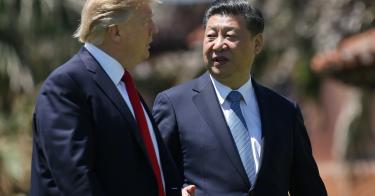Summit meetings between American presidents and Chinese leaders are always high-risk. But the drama of last week’s meetings between Presidents Donald Trump and Xi Jinping concealed a key fact: U.S. policy toward China is based on an assumption that has never looked less attractive.
Leading up to this summit, many commentators wished it weren’t taking place at all. At The Heritage Foundation, my colleagues Walter Lohman and Dean Cheng wrote that, “If this meeting must proceed, the best it can do is to refrain from much substantive discussions.”
Asia expert Michael Auslin, at the American Enterprise Institute, noted the risk of a summit when the “Trump administration is still largely bereft of high-ranking political appointees fit to make Asia policy.” Others agreed, citing the possibility that Trump might strike a deal he would later regret, or focus on U.S.-China relations at the expense of America’s Asian allies.
Those are serious concerns. But the broader problem is this: Since President Richard Nixon’s visit to China in 1972, the United States has proceeded on the belief that, as China became more involved with the world, and wealthier, it would moderate its behavior.
Nixon’s opening of China was partly predicated on his belief that the United States needed to pull China westward as part of the Cold War struggle against the Soviet Union. But Nixon also believed it was dangerous to leave China isolated, free to nurse its grievances.
Nixon’s implicit argument was that if we engaged with China, and China engaged with the world, it would become less aggressive, easier to deal with, and more lawfully governed. It might not be a democracy, but it would at least not be a dictatorship.
That wasn’t an inherently foolish belief — Mao’s China was isolated, brutal and ideologically opposed to the Western order. From the perspective of the early 1970s, there were good reasons to believe that leaving China alone hadn’t worked.
So presidents since Nixon have hoped that a rising Chinese middle class would change China from the inside. At its root, this approach rested on the belief that a rising middle class had liberalized the West, and would ultimately do the same thing in China. Even as an argument about Western history, this belief has problems. The Western middle classes wanted political power, but they didn’t always want peace. The U.S. strategy rested on the hope that a rich China would necessarily use its power for good. It gave little thought to what might happen if a rich China turned out not to be a nice China.
In a sense, the U.S. strategy of encouraging China to become wealthy worked. Not only did China prosper, it prospered as it liberalized internally — and after 1972, it stopped supporting Communist insurgencies.
But the strategy turned out to have limits. Above all, the Chinese leadership recognized that more reforms might end its rule. So Chinese reforms have ground to a halt — and as a result, Chinese growth has slipped.
That leaves U.S. policy caught on the fence. We can’t make China poor, but its regime doesn’t want to be liberal — and so far, it’s willing to sacrifice growth to stay in power. Meanwhile, as regime stability has become a priority, Beijing has grown more aggressive.
In time, the U.S. strategy just might work: Internal pressures might force Beijing to return to growth (and thus political reform). But at best, the intervening years will not be pleasant.
As the concerns before the summit made clear, Trump could make this problem worse. But it’s not the kind of problem that any president can solve. No deal, no matter how artful, can fix it. It’s a problem to be managed — and it’s going to be with us for a long time.
This piece originally appeared in Newsday


